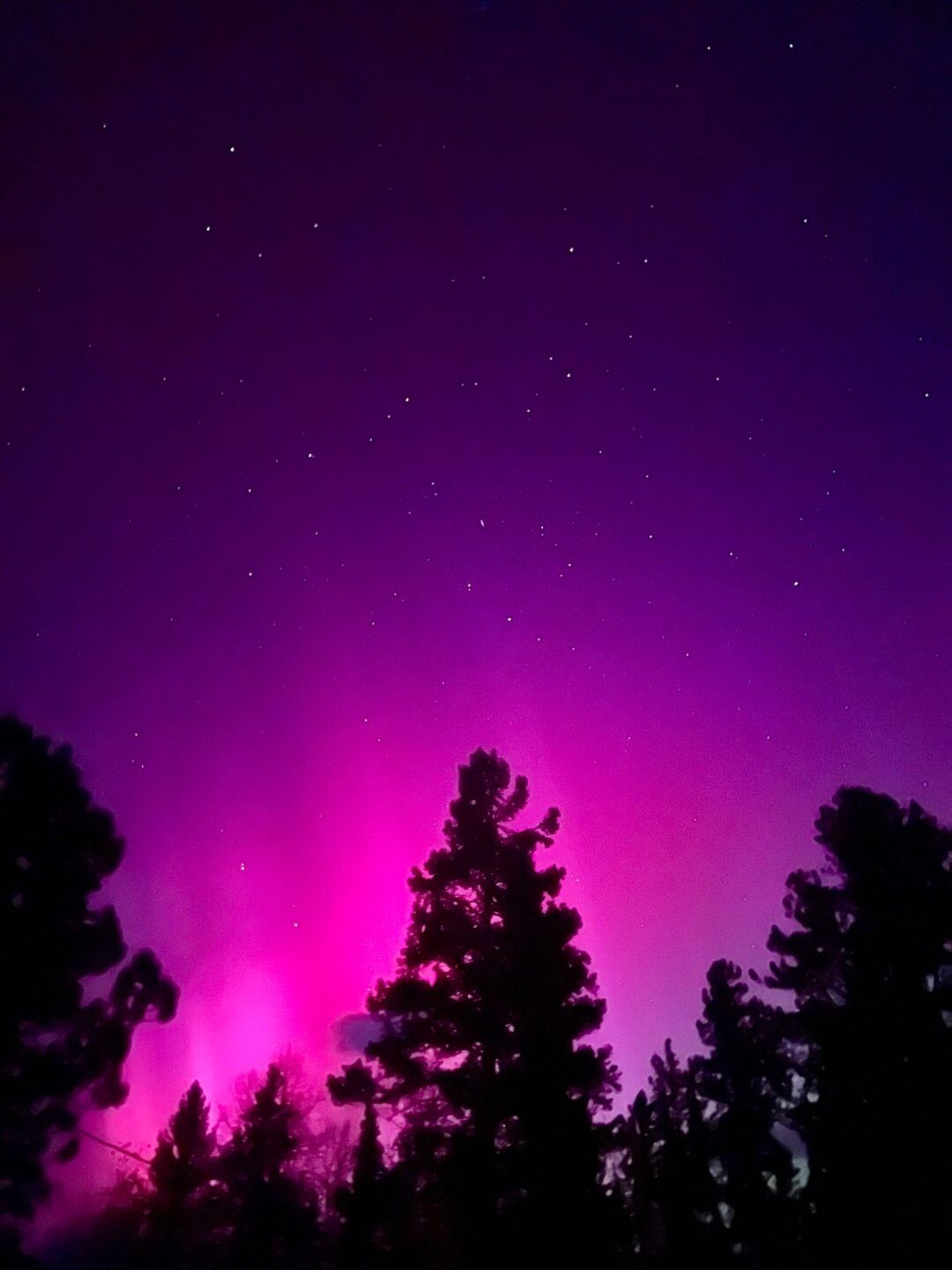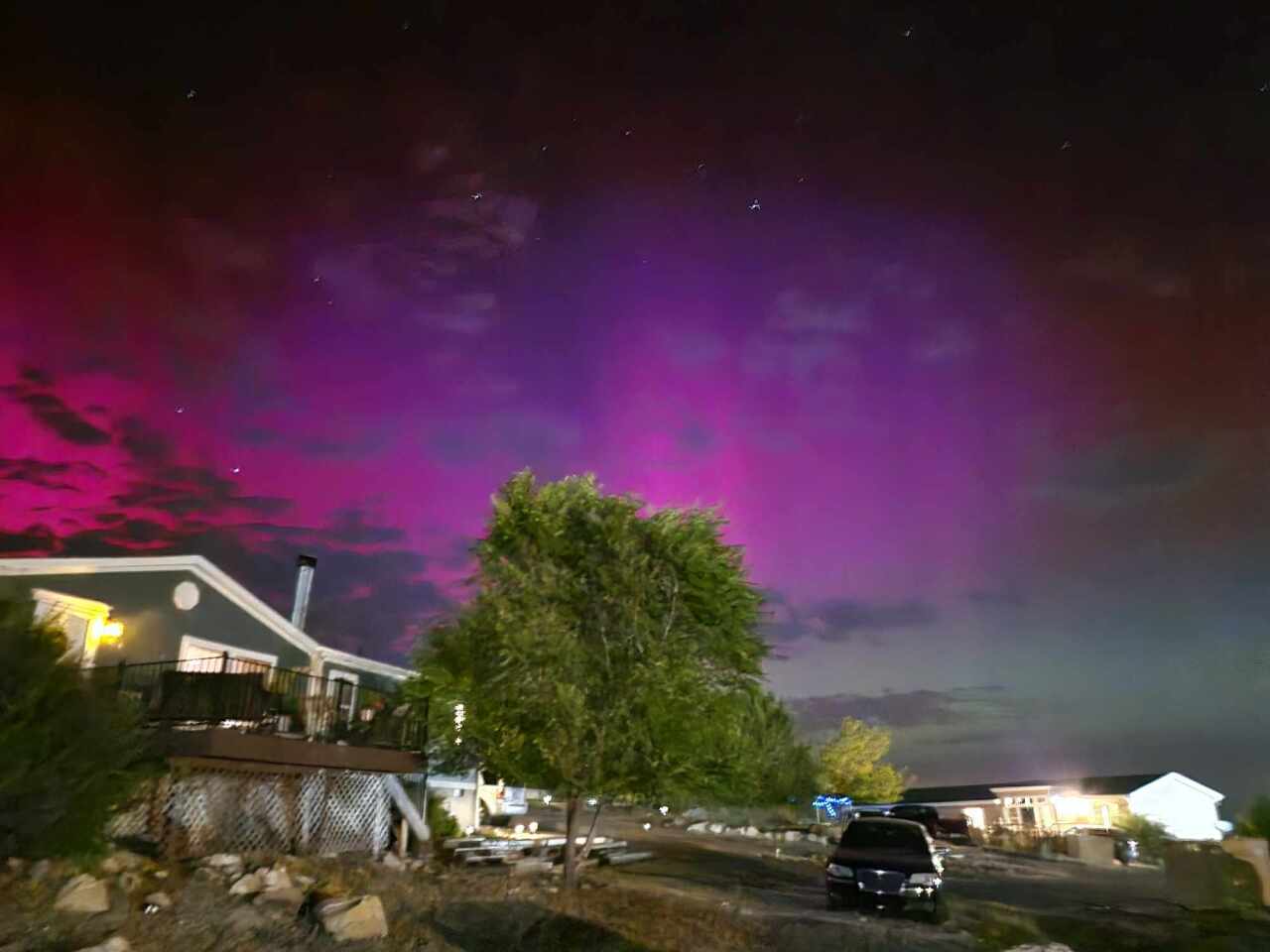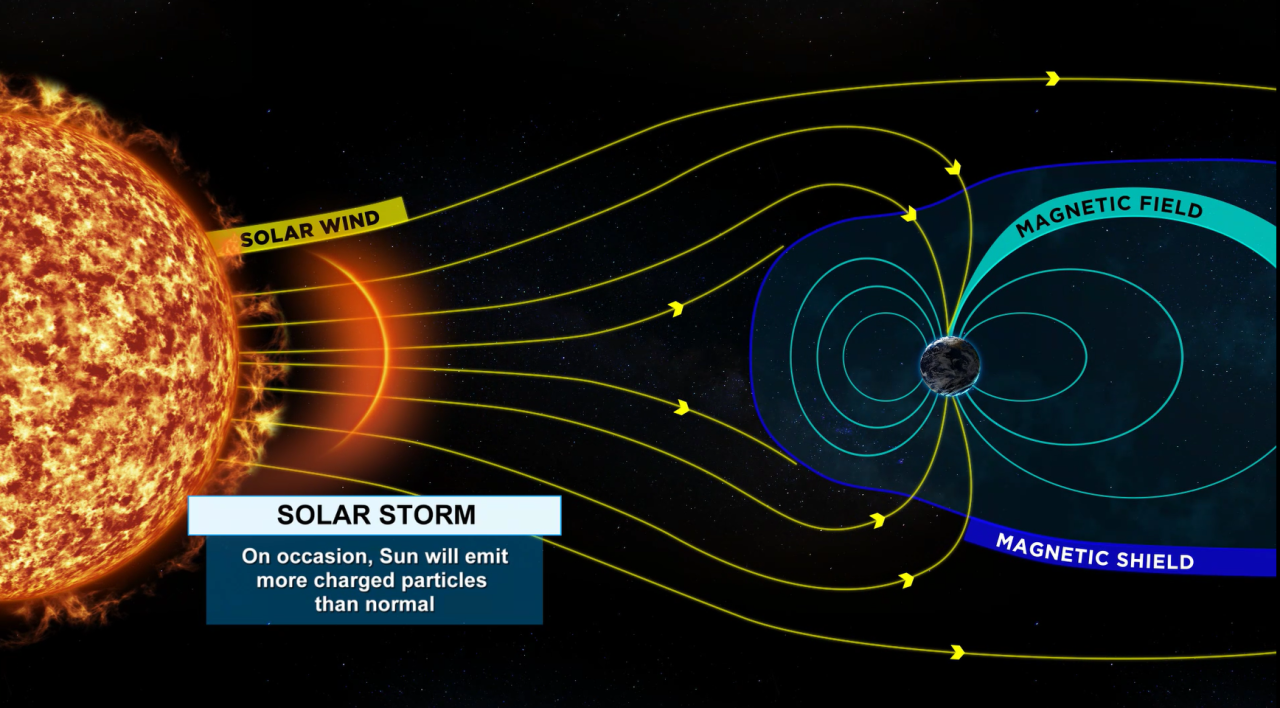The northern lights were spotted all across Colorado and the rest of the United States last night. They could be seen as far south as Alabama and Georgia. From Woodland Park to Lamar, the northern lights lasted throughout the night. It was visible with the naked eye and gave the sky a pink hue. Through a camera though, bright pinks and greens could be seen across the state.

Many of our viewers sent in photos of the spectacular display.We got to see the Aurora dance across the sky with bright pink hues and earthy greens. If you missed last night's display, we could have another chance in 2025.
The Space Weather Prediction Center monitors solar flares from the sun. The sun goes through cycles when producing these flares and we are seeing an increase in activity because of where the sun is at in this cycle. This is good news for those who love to catch this rare opportunity because we could see more solar flares going into 2025. During solar storms we can see these flares happen, and when the come in contact with Earth that's when the Space Weather Prediction Center will issue geomagnetic storm warnings.

This specific storm was considered a G4 and this scale ranges from 1 (a minor event) to 5 (an extreme event that could effect power systems). The sun doesn't always produce these powerful storms, and sometimes we don't even notice them. With this specific flare being so strong, that's why we were able to see it this far south.

If you are wondering how this phenomenon happens, it's due to a strong solar flare from the sun. When this radiation interacts with Earth's atmosphere it creates this colorful display. Usually, we see this happen closer to the North and South Poles because these particles will follow the magnetic field.

You might also be wondering what determines the color of the northern lights. It has to do with the type of gases that are floating around in our atmosphere. When there's nitrogen present, we will get more of a blue and purple glow. Oxygen will produce those greens and reds that you see. Looking at the aurora last night, we can see that this radiation was interacting with both nitrogen and oxygen in the atmosphere.

Thank you to everyone that sent in pictures, and you can still send yours in to weather@koaa.com for a chance to be featured.
_______
Have a question or story idea you would like the First Alert 5 Weather team to consider? Email: weather@koaa.com
Watch KOAA News5 on your time, anytime with our free streaming app available for your Roku, FireTV, AppleTV and Android TV. Just search KOAA News5, download and start watching.
























